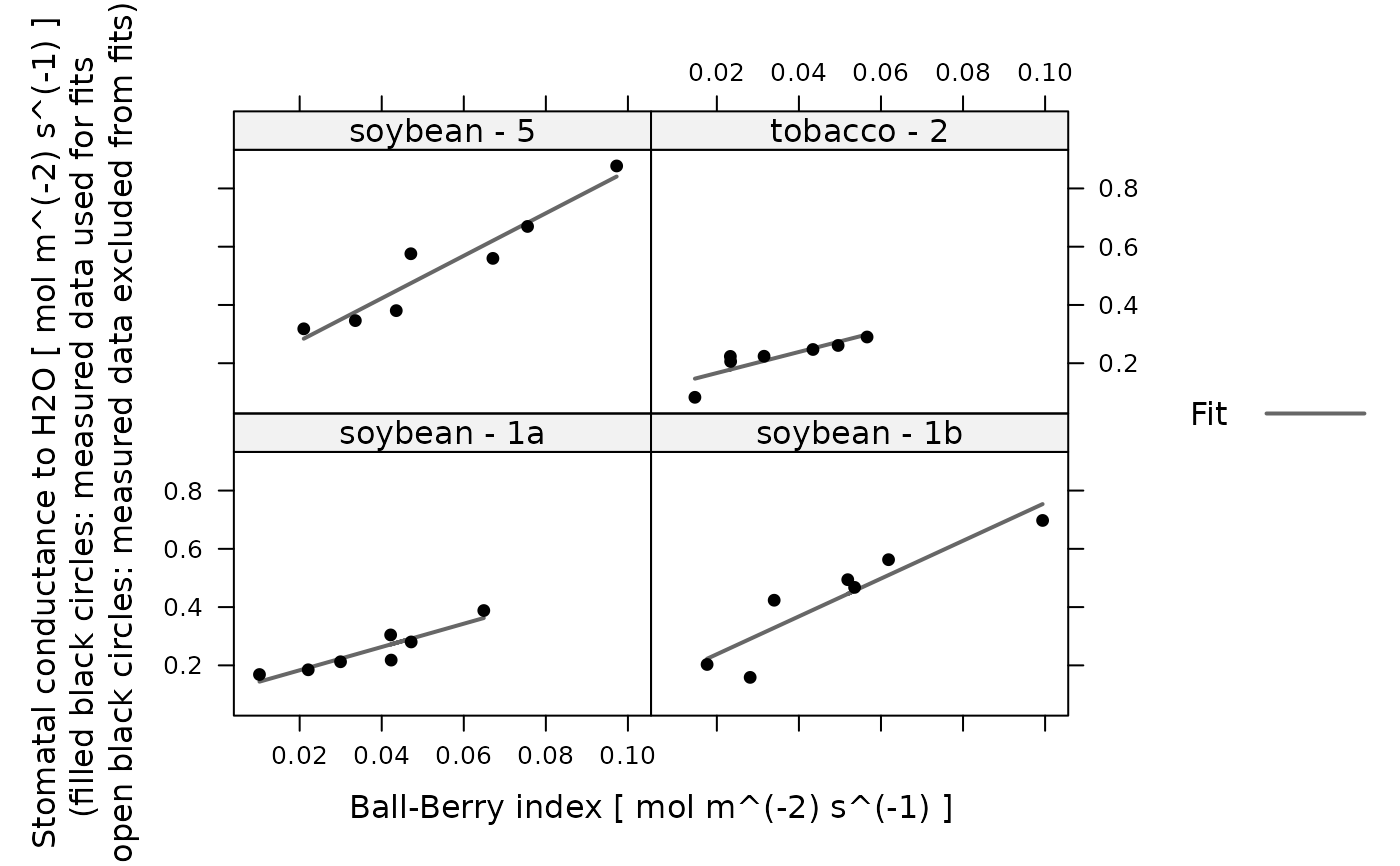Plot the results of a C3 CO2 response curve fit
plot_ball_berry_fit.RdPlots the output from fit_c3_aci or
fit_c3_variable_j.
Usage
plot_ball_berry_fit(
fit_results,
identifier_column_name,
bb_index_column_name = 'bb_index',
gsw_column_name = 'gsw',
...
)Arguments
- fit_results
A list of three
exdfobjects namesfits,parameters, andfits_interpolated, as calculated byfit_c3_aci.- identifier_column_name
The name of a column in each element of
fit_resultswhose value can be used to identify each response curve within the data set; often, this is'curve_identifier'.- bb_index_column_name
The name of the column in
fit_results$fitsthat contains the Ball-Berry index inmol m^(-2) s^(-1); should be the same value that was passed tofit_ball_berry.- gsw_column_name
The name of the column in
fit_results$fitsthat contains the stomatal conductance to water vapor inmol m^(-2) s^(-1); should be the same value that was passed tofit_ball_berry.- ...
Additional arguments to be passed to
xyplot.
Details
This is a convenience function for plotting the results of a Ball-Berry curve
fit. It is typically used for displaying several fits at once, in which case
fit_results is actually the output from calling
consolidate on a list created by calling by.exdf
with FUN = fit_ball_berry.
The resulting plot will show curves for the fitted gsw, along with
points for the measured values of gsw.
Internally, this function uses xyplot to perform the
plotting. Optionally, additional arguments can be passed to xyplot.
These should typically be limited to things like xlim, ylim,
main, and grid, since many other xyplot arguments will be
set internally (such as xlab, ylab, auto, and others).
See the help file for fit_ball_berry for an example using this
function.
Value
A trellis object created by lattice::xyplot.
Examples
# Read an example Licor file included in the PhotoGEA package, calculate
# additional gas properties, calculate the Ball-Berry index, define a new column
# that uniquely identifies each curve, and then perform a fit to extract the
# Ball-Berry parameters from each curve.
licor_file <- read_gasex_file(
PhotoGEA_example_file_path('ball_berry_1.xlsx')
)
licor_file <- calculate_total_pressure(licor_file)
licor_file <- calculate_gas_properties(licor_file)
licor_file[,'species_plot'] <-
paste(licor_file[,'species'], '-', licor_file[,'plot'])
licor_file <- calculate_ball_berry_index(licor_file)
# Fit all curves in the data set
bb_results <- consolidate(by(
licor_file,
licor_file[, 'species_plot'],
fit_ball_berry
))
# View the fits for each species / plot
plot_ball_berry_fit(bb_results, 'species_plot')
